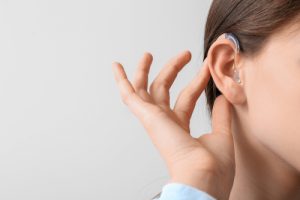 Why Does My Hearing Aid Keep Changing Volume?
Why Does My Hearing Aid Keep Changing Volume?
Most hearing aids have some sort of automatic volume control that automatically adjusts the volume based on the environment you are in. These are usually set by your audiologist when you first get your hearing aids. However, if your hearing aid keeps changing volume unexpectedly, there could be an issue with your device.
How Do Hearing Aids Work?
A hearing aid consists of microphones, a computer chip and speakers (sometimes called receivers). The mics collect sounds around you, convert them into digital code and then adjust the sound based on your hearing loss, listening needs, and your surroundings. The chips amplify the signal, analyze it and then send it to the receivers. The receivers deliver the sounds to your ears through a tube or earpiece. The style of the hearing aid can vary a great deal, from tiny in-the-ear devices to filling your entire ear.
Hearing Aids Maintenance
It’s important to clean and care for your hearing devices as they age. Tools like a dry cloth, pick and brush, dehumidifier, or a hearing aid cleaning kit can help keep them in good condition. If your manual controls are clogged with dust or lint, this can prevent them from adjusting to the settings you want. The best thing you can do is check them regularly. You can also take your device to a hearing care professional for maintenance or repair.
Software Issues
A hearing aid’s volume control is a little like a toggle switch. You push it up to raise the volume, and down to lower it. A beep-tone will alert you that the adjustment is complete. Your device also produces a steady tone when the volume is maxed out or the minimum point has been reached. This will usually cancel any changes that you might make to the volume.
For Apple users, there’s been a lot of confusion surrounding a recent Apple update, iOS 15, that caused bluetooth connectivity problems for some hearing aid users. The good news is that the issues can be easily fixed. If you’re experiencing a bluetooth connection dropout, unpair your hearing aids in the iOS settings with the app still running in the background, and then re-pair them again as instructed. This should fix the issue for good.
Battery Issues
Hearing aid batteries can drain faster than they should because of temperature extremes and moisture. The good news is that you can extend the life of your batteries by storing them in a dry, cool place and charging them every night while you sleep. You should also ensure that you have cleaned your hands before putting them in the hearing aid so that any dirt and grease doesn’t negatively affect your battery. The best way to make sure you get the right size battery for your hearing aid is to consult with a professional. A hearing health provider can help you determine which sizes are compatible with your device and will also provide replacement batteries if necessary.
Hardware Issues
Hearing aids use electronics to collect sounds, amplify them and deliver them into your ears. The process starts with a microphone (also called an earpiece) that picks up sounds and then a computer chip (amplifier) that amplifies them. A miniature loudspeaker (receiver) then delivers the amplified sound into your ear canal. While hearing aids are extremely advanced, there is no guarantee they won’t malfunction over time. This happens due to a number of factors, including aging and improper care. The most common cause of a hearing aid malfunction is a hardware issue, such as a broken earpiece or battery. These problems can be easily solved at home by replacing the batteries with a fresh pair and cleaning the earpiece or battery door compartments thoroughly. If the problem persists, it may be time to see your audiologist for professional assistance. Many offices have onsite repair available for minor damage, while others offer a lending service until your device is repaired by the manufacturer.

